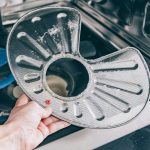As automotive enthusiasts, you most likely know that the performance of a vehicle is partly influenced by the quality of the engine. However, you might not be aware that thermal insulation plays a major role in this. High-performance vehicles, such as those manufactured in the UK, often generate a significant amount of heat. To maintain optimal functionality and longevity, it’s necessary to have effective and efficient insulation solutions in place.
Today, we’re going to delve into the importance of proper fuel line insulation, explain the risks of inadequate or failed insulation and explore the various materials and systems used for insulation in the automotive industry.
In the same genre : How can you improve the brake response in a UK-made sports car without upgrading the entire system?
Importance of fuel line insulation
If you’ve ever popped open the hood of a car after a long drive, you’ll know how hot an engine can get. The heat generated by the engine and other components, including the turbocharger, can significantly affect the performance and lifespan of a vehicle. This is where fuel line insulation comes into play.
Fuel line insulation is designed to protect your vehicle’s engine and other components from the excessive heat generated during operation. This insulation isn’t just about preventing heat damage; it also improves the efficiency of your vehicle’s fuel system. Without proper insulation, heat from the engine and exhaust system can heat up the fuel lines, causing the fuel to vaporise before reaching the combustion chamber. This leads to a decrease in engine performance and fuel efficiency.
This might interest you : What is the optimal way to adjust the seats in a British luxury vehicle for ergonomic driving?
Risks of inadequate insulation
Now that we’ve established the role of heat insulation, let’s discuss the risks associated with inadequate insulation. Your vehicle’s engine and fuel system are not the only components at risk from high temperatures. Heat can also affect electronic systems, wiring, plastic parts, and the overall structural integrity of the car.
In extreme cases, high temperatures can cause fuel lines to crack or melt, leading to dangerous fuel leaks. These leaks can cause serious damage to the vehicle and even pose a risk of fire. Therefore, ensuring proper fuel line insulation is not just about performance and efficiency, but also about safety.
Materials used in fuel line insulation
Various materials are used for fuel line insulation, each with its own set of advantages and drawbacks. Among these, foam, wool, and water are the most commonly used. Wool and foam are excellent insulators, able to withstand high temperatures without losing their insulating properties. Water, on the other hand, is used in cooling systems to dissipate heat.
Foam insulation is often used due to its ability to mold to the shape of the fuel lines, providing a consistent layer of insulation. Wool offers similar benefits but can be more expensive. Water-based cooling systems are generally used in conjunction with other insulation materials, providing an additional layer of heat protection.
Designing effective insulation systems
The last aspect we’ll delve into is the design of effective insulation systems. When designing a fuel line insulation system, several factors need to be taken into consideration. The amount of heat generated by the engine, the placement of the fuel lines, the type of material used for the fuel lines, and the expected performance of the vehicle are all factors that will influence the design.
The insulation system must be able to withstand the peak heat generated by the engine while also being efficient in its heat dissipation capabilities. The design should also take into account the vehicle’s overall architecture to ensure that the insulation system doesn’t interfere with other components.
In high-performance vehicles, the use of turbochargers, which significantly increase the heat generated, poses an additional challenge for the design of the insulation system. An effective solution for this is a heat shield. A heat shield is a barrier that is placed between the turbocharger and the fuel lines, preventing the heat from the turbocharger from directly affecting the fuel lines. This additional measure can significantly improve the performance and longevity of the fuel lines and the vehicle as a whole.
As we’ve seen, ensuring proper fuel line insulation in UK-manufactured performance cars is a multi-faceted task, requiring careful consideration of materials, design, and the vehicle’s specific characteristics. By taking these factors into account, you can ensure that your vehicle’s engine performs at its peak while also prolonging its lifespan.
Remember, an ounce of prevention is worth a pound of cure. So, don’t overlook the importance of fuel line insulation in your performance vehicle. After all, it’s not just about speed and power, it’s also about longevity and efficiency.
Advanced Insulation Products and Techniques
In addition to the standard foam, wool and water-based insulation, manufacturers often turn to advanced heatshield products to further enhance the thermal resistance of their vehicles. These typically include pipe insulation, mineral wool, loose fill, and more recently, the use of a turbo blanket.
Pipe insulation, like the name suggests, is specifically designed to wrap around fuel lines, providing an effective barrier against heat. Made from materials like foam, rubber or fibreglass, it helps to maintain fuel at optimal temperatures, improving energy efficiency and overall performance.
Mineral wool is a type of insulation made from fibres of natural or synthetic minerals. Known for its excellent thermal resistance and fire retardancy, it is an ideal insulation material for high-performance vehicles where temperatures can get extremely high.
Loose fill insulation, composed of small particles of fibre, foam or other materials, is also used in certain applications. Although not commonly used in fuel line insulation, it can provide a useful layer of protection in areas of the engine bay where traditional insulation methods are not feasible.
A turbo blanket, or turbo shield, is a newer development in automotive insulation. This encapsulating cover is designed to fit over the turbocharger, trapping the heat within and preventing it from spreading to other parts of the engine bay. Using a turbo blanket can significantly reduce underhood temperatures, leading to an increase in horsepower and a decrease in turbo lag.
Additionally, certain brands, such as the VAT brand, provide a range of products specifically geared towards automotive heat management. These include heat shields, exhaust wraps, and various other insulation materials, each with their own specific applications and benefits.
Conclusion: Optimising Heat Management for Performance
As we’ve explored, ensuring proper fuel line insulation in UK-manufactured performance cars involves a comprehensive understanding of heat management. From standard foam insulation to more advanced measures like turbo blankets and heatshield products, there are numerous techniques and materials that can be utilised to maximise thermal resistance and improve engine performance.
While the focus for many automotive enthusiasts may be on speed and power, it’s crucial to remember the importance of efficiency and longevity. A high-performance vehicle that is not well-insulated risks decreased performance, shorter lifespan and even potential safety hazards. By investing in high-quality insulation and regularly checking for signs of wear and tear, owners can maintain the excl VAT value of their vehicle and enjoy their performance car to the fullest.
Today, brands like VAT and others continue to innovate and develop new products to aid in this vital aspect of vehicle maintenance. And as the automotive industry evolves, so too will the methods and materials used to manage heat in our vehicles.
In conclusion, proper insulation is not merely an additional feature; it’s an integral part of vehicle design and performance. So, whether you’re a manufacturer, mechanic, or simply a car enthusiast, always remember: proper heat management can make the difference between a good car and a great one.











